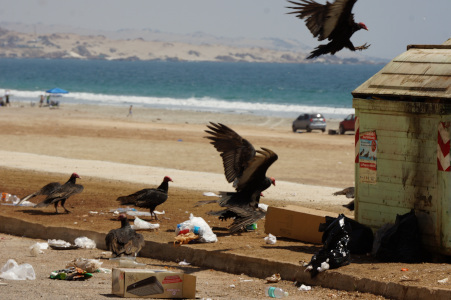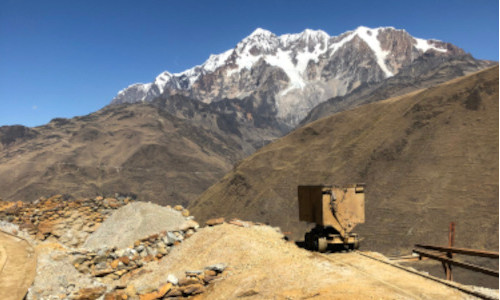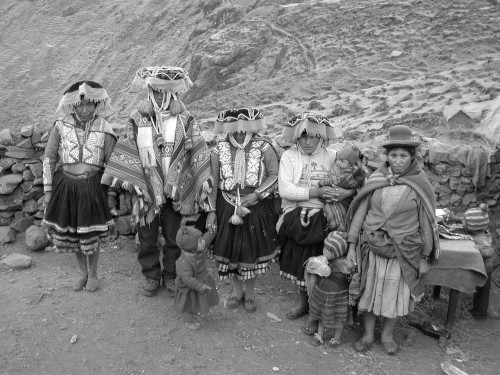L’International Research Project (IRP) « ATACAMA-SHS -sciences sociales en territoire minier. Projet pluridisciplinaire de recherche et de formation doctorale » prend la suite d’un Laboratoire international associé (LIA) qui a fonctionné au cours de la période 2014-2018 et ouvre la voie à une consolidation des liens désormais anciens existant entre les partenaires.
This research project aims to consolidate and expand a pluridisciplinary research collaboration and doctoral education in social and human sciences on the topic of mining in the Atacama desert. It is a continuation of the CNRS program LIA (2015-2019) Mining systems of the Atacama Desert and reunites under a same research device several research teams and chilean and french doctoral students, in order to provide a common frame of scientific collaboration, develop symmetric and complementary trajectories of doctoral training and mentoring and to create, through the use of digital humanities, common documentation and knowledge modelisation, as well as scientific and heritage devices.
The Atacama desert, from the angle of mining exploitation, has great research potential, not only as an object of study, but also for its articulation of wider issues, through innovative hypothesis at different levels which allow for theoretical generalisation. Therefore, in a historical perspective, it allows to analyse mining activities with an absolutely exceptional historical and archeological depth (pre-inca , Inca, colonial and contemporary exploitations) and constitutes one of the only points of the globe where the history of human occupation rests mainly on mining exploitation. On the historical level, this immense reservoir of natural resources since guano and nitrates until copper, passing through gold and silver, becomes a major strategic area for international relations and a space of competition between different global and regional powers. It is likewise a section of the coast with the highest port density of all the Latin American Pacific coast and this “port-isation” is a visible trait of mining exploitation in the Atacama desert. These ports constitute privileges observatories to understand the organisation of mining systems, their evolutions, crises and reconversions. The topic of mining also allows to connect the Atacama desert with other, distant mining territories (New Caledonia, Arizona, Bolivia…) which present comparable characteristics in terms of mineral wealth, aridity and governance. This allows to draft a comparative anthropology of contemporary mining territories startins from common topics (gender and the masculinisation of the social space; over-technification and singularity of human-machine relations; relationship to nature ; diversity, mobility and migratory flows ; re-activation of profane forms of knowledge, etc.) and constitutes a privileged, strategic terrain to observe forms of mining capitalism under political and environmental constraints, in a global context of natural resource “rush”.
The Atacama desert, considered in its trinational extension (Bolivia, Argentina, Chili) is also becoming a continental energetic hub with the development of lithium extraction in the salt lakes highlands for the fabrication of batteries and the development of photovoltaic solar parcs whose impacts go beyond the local scale, both in terms of access to mineral resources and of the types of extractive models and scientific experimentation terrains.
Finally, this growing complexification of the desert is accompanied by the development of great scientific equipment (astronomical, oceanic, geological observatories…) and specialised research centers, which offer a singularly favorable terrain to pluridisciplinary research in social sciences. The scientific collaboration in Human and Social sciences between France and Chili has a long history and a particular importance. Come to maturity, is is now facing the challenge of adopting symmetric and complementary forms. The international co-tutoring of doctoral students has shown to be a powerful tool : it contributes to the doctoral students’ education, to the symmetrical collaborations, multiplies the funding opportunities, creates and develops connections, and involves the doctoral students in the construction of common research topics. The program currently counts with 10 PHD candidates with international co-directions issuing from the LIA MINES ATACAM.
This project aims to develop and consolidate this process. In Chili, it rests on the doctoral training programs of three partner universities (social sciences, anthropology, archeology, geography) and accompanies the development of emerging doctoral schools. In France, it associates two research centers (CREDA and PRETECH) with a history of collaboration (LIA MINES) and a capacity for supervising the development of complementary scientific competences, located in two locations of reference – Campus Condorcet and MSH Monde – and for mobilising cuttinG-edge instratructures and equipments – especially in the domain of digital humanities (CERV, HUMA-NUM, CCSD, MSH). This project is inscribed in the european research space and aims to serve as a base for the presentation of an ERC, H2020 or FP9 project.
This proposal covers a time span of 5 years (2020-2024). It rests on different ongoing research programs – ANR, ECOS SUD, Fondecyt – and on the involvement of first-rate universitary partners. The demanded budget constitutes the 15% of the total budget mobilised and the main results aimed for concern research (co-authored scientific publications, presentation of common projects), doctoral training (consolidation of a common training space, tutoring of co-directed PHD projects, development of new doctoral schools) and the scientific and heritage mediation (knowledge modelisation, open data, digital and geological archives, etc.).



